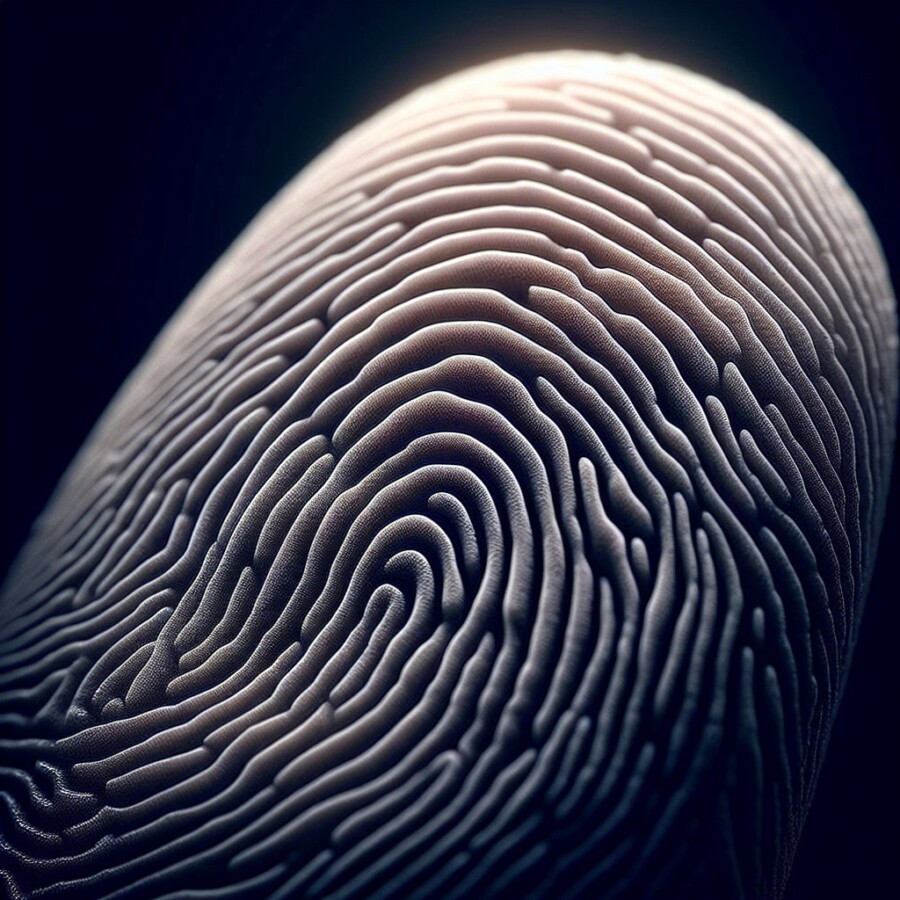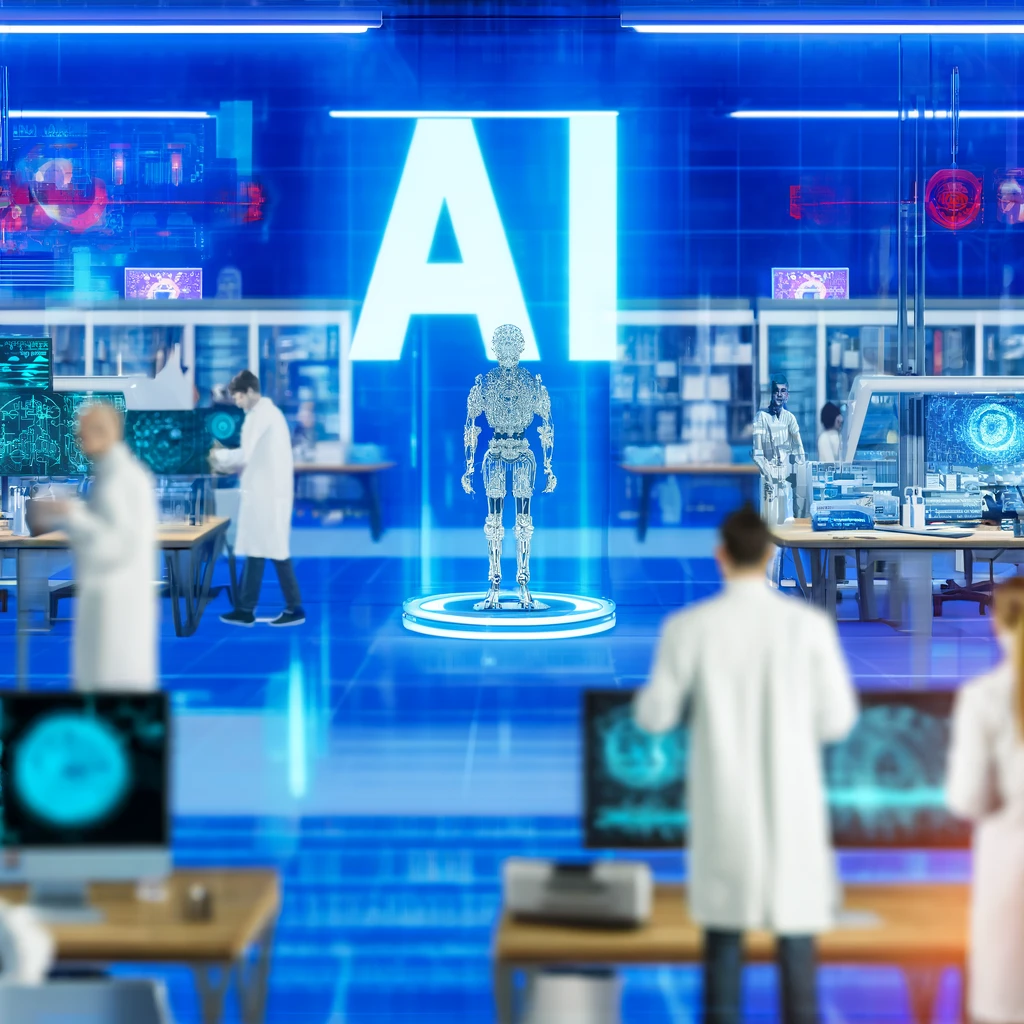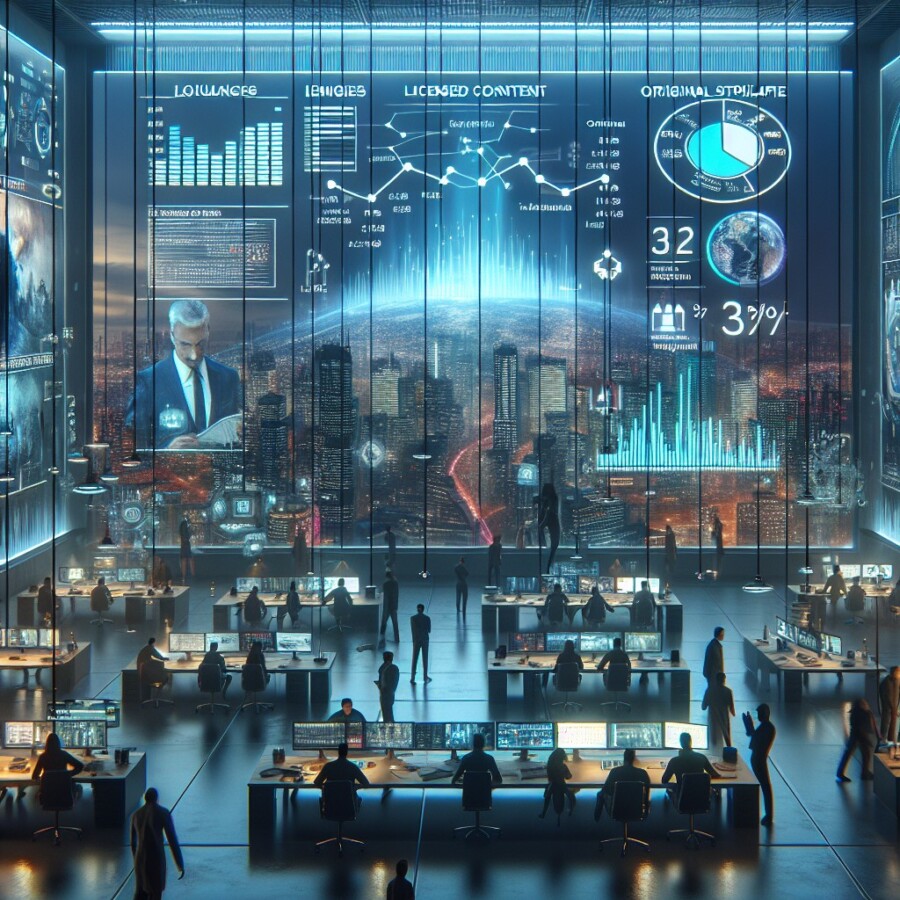New research from Columbia University challenges the idea that every fingerprint is completely unique. The university’s team used a special computer program to analyze 60,000 fingerprints and see if prints from different fingers belonged to the same person. The program was able to do this with about 75-90% accuracy, but the researchers aren’t exactly sure how it worked. Instead of focusing on the little details of the ridges, like where they end or split, the program looked at the way the ridges were arranged in the middle of the finger. This is different from how forensic experts usually analyze fingerprints.
This study could have an impact on things like biometrics (using fingerprints to unlock phones, for example) and forensic science (solving crimes using fingerprints). Right now, if the police find a thumbprint at one crime scene and an index finger print at another, they can’t say for sure if they’re from the same person. But the computer program might be able to figure that out. The researchers say more research is needed before the program can be used in court, but it could be helpful for starting investigations.
Dr. Sarah Fieldhouse, who is an expert in forensic science, has some questions about the computer program. She wonders if the program’s way of identifying fingerprints stays the same when the skin moves or changes over time. The researchers themselves aren’t exactly sure how the program works, which is often the case with computer programs that use artificial intelligence.
The study from Columbia University has been reviewed by other experts and will be published in a scientific journal. But it’s important to remember that these findings might not change much in real-life criminal investigations right now. Most people still believe that fingerprints are unique to each person.
Original news source: Our fingerprints may not be unique, claims AI (BBC)
🎧 Listen:
Slow
Normal
Fast
📖 Vocabulary:
| 1 | challenges | To question or test the truth of something |
| 2 | unique | Being the only one of its kind; unlike anything else |
| 3 | analyze | To examine something carefully to understand it or learn more about it |
| 4 | accuracy | How correct or precise something is |
| 5 | forensic | Related to scientific methods of solving crimes, involving examining the objects or substances that are involved in the crime |
| 6 | biometrics | The use of body measurements and calculations for identification purposes |
| 7 | thumbprint | The pattern made by the tip of your thumb when it touches a surface |
| 8 | index | Referring to the finger next to the thumb |
| 9 | investigations | Detailed searches or examinations to find out more about something |
| 10 | artificial | Made or produced by human beings rather than occurring naturally, especially as a copy of something natural |
| 11 | identifying | Recognizing and naming someone or something |
| 12 | reviewed | Examined carefully and critically, especially before being accepted or approved |
| 13 | journal | A type of magazine that publishes academic or professional research |
| 14 | findings | The results or conclusions that come from examining or studying something |
| 15 | criminal | Related to the act of breaking the law |
Group or Classroom Activities
Warm-up Activities:
– News Summary
Instructions: Have students read the article individually or in pairs. Then, ask them to write a summary of the article in their own words, including the main points and any relevant details. After they finish, have them share their summaries with a partner or the whole class.
– Opinion Poll
Instructions: Divide the class into small groups. Give each group a list of statements related to the article (e.g. “Fingerprints are completely unique to each person”). Have the groups discuss each statement and indicate whether they agree or disagree. After the discussion, ask each group to share their opinions and reasons with the rest of the class.
– Vocabulary Pictionary
Instructions: Prepare a list of vocabulary words from the article (e.g. biometrics, forensic science, artificial intelligence). Divide the class into pairs or small groups. Give each group a word and have them draw a picture to represent the word. The other groups must guess the word based on the drawing. Encourage the use of English during the guessing process.
– Pros and Cons
Instructions: Divide the class into two groups. Assign one group to come up with the pros of using fingerprints as a form of identification and the other group to come up with the cons. Give them a few minutes to brainstorm and then have each group share their ideas. Facilitate a class discussion to explore different perspectives on the topic.
– Future Predictions
Instructions: Ask students to imagine how fingerprint technology might evolve in the future. Have them write down their predictions individually or in pairs. Then, have them share their predictions with the class and discuss the potential impact on society, privacy, and security. Encourage creativity and critical thinking.
🤔 Comprehension Questions:
1. What did the researchers at Columbia University use to analyze the fingerprints?
2. How accurate was the computer program in determining if prints from different fingers belonged to the same person?
3. How did the program analyze the fingerprints differently from forensic experts?
4. What are some areas where this research could have an impact?
5. Why can’t the police currently determine if fingerprints from different crime scenes are from the same person?
6. What questions does Dr. Sarah Fieldhouse have about the computer program?
7. Why are the researchers unsure about how the program works?
8. What do most people still believe about fingerprints?
Go to answers ⇩
🎧✍️ Listen and Fill in the Gaps:
New research from Columbia (1)______ challenges the idea that every fingerprint is completely unique. The university’s team used a special (2)______ (3)______ to analyze 60,000 fingerprints and see if prints from different (4)______ belonged to the same person. The program was able to do this with about 75-90% accuracy, but the researchers aren’t exactly sure how it worked. Instead of focusing on the little details of the ridges, like where they end or split, the program looked at the way the ridges were arranged in the middle of the finger. This is different from how (5)______ experts usually analyze fingerprints.
This (6)______ could have an impact on things like biometrics (using fingerprints to unlock (7)______, for example) and forensic science (solving crimes using fingerprints). Right now, if the police find a thumbprint at one crime scene and an (8)______ finger print at another, they can’t say for sure if they’re from the same person. But the computer program might be able to (9)______ that out. The researchers say more research is needed before the program can be used in court, but it could be helpful for (10)______ investigations.
Dr. Sarah Fieldhouse, who is an expert in forensic science, has some questions about the computer program. She wonders if the program’s way of identifying fingerprints stays the same when the skin (11)______ or (12)______ over time. The researchers themselves aren’t exactly sure how the program (13)______, which is often the case with computer programs that use (14)______ intelligence.
The study from Columbia University has been reviewed by other (15)______ and will be published in a scientific (16)______. But it’s important to remember that these findings might not change much in real-life criminal investigations right now. Most people still believe that fingerprints are unique to each person.
Go to answers ⇩
💬 Discussion Questions:
Students can ask a partner these questions, or discuss them as a group.
1. What is biometrics and how is it used in everyday life?
2. How would you feel if your phone could only be unlocked using your fingerprint?
3. Do you think it’s important for fingerprints to be completely unique? Why or why not?
4. Have you ever seen a crime show or movie where fingerprints were used to solve a case? What did you think about it?
5. What do you think about using fingerprints as a form of identification? Do you think it’s reliable?
6. How do you think this new research could impact forensic science in the future?
7. Do you think it’s a good idea to use a computer program to analyze fingerprints in criminal investigations? Why or why not?
8. Have you ever had your fingerprints taken before? If so, why?
9. What do you think about the idea that fingerprints might not be completely unique?
10. How do you think this new research could change the way crimes are solved in the future?
11. Do you think it’s important for scientists to fully understand how a computer program works before using it in court? Why or why not?
12. Have you ever heard of artificial intelligence before? What do you know about it?
13. How do you think this new research could impact the field of biometrics?
14. Do you think it’s necessary for the researchers to conduct more studies before using the computer program in court? Why or why not?
15. What are some other ways that fingerprints could be used in everyday life, besides unlocking phones or solving crimes?
Individual Activities
📖💭 Vocabulary Meanings:
Match each word to its meaning.
Words:
1. challenges
2. unique
3. analyze
4. accuracy
5. forensic
6. biometrics
7. thumbprint
8. index
9. investigations
10. artificial
11. identifying
12. reviewed
13. journal
14. findings
15. criminal
Meanings:
(A) Related to scientific methods of solving crimes, involving examining the objects or substances that are involved in the crime
(B) A type of magazine that publishes academic or professional research
(C) Related to the act of breaking the law
(D) To question or test the truth of something
(E) The results or conclusions that come from examining or studying something
(F) The use of body measurements and calculations for identification purposes
(G) The pattern made by the tip of your thumb when it touches a surface
(H) Being the only one of its kind; unlike anything else
(I) To examine something carefully to understand it or learn more about it
(J) Made or produced by human beings rather than occurring naturally, especially as a copy of something natural
(K) Referring to the finger next to the thumb
(L) How correct or precise something is
(M) Examined carefully and critically, especially before being accepted or approved
(N) Recognizing and naming someone or something
(O) Detailed searches or examinations to find out more about something
Go to answers ⇩
🔡 Multiple Choice Questions:
1. What did the researchers at Columbia University use to analyze fingerprints?
(a) Traditional forensic methods
(b) Microscopes
(c) DNA testing
(d) A special computer program
2. How accurate was the computer program in determining if fingerprints belonged to the same person?
(a) 50-75%
(b) 90-100%
(c) 75-90%
(d) Less than 50%
3. What aspect of the fingerprints did the computer program focus on?
(a) The end or split of the ridges
(b) The arrangement of ridges in the middle of the finger
(c) The size of the ridges
(d) The color of the ridges
4. How could this research impact biometrics?
(a) It could improve facial recognition technology
(b) It could make voice recognition more accurate
(c) It could enhance iris scanning technology
(d) It could affect the use of fingerprints to unlock phones
5. What is one potential application of this research in forensic science?
(a) Analyzing DNA evidence
(b) Examining blood spatter patterns
(c) Solving crimes using fingerprints
(d) Identifying suspects through eyewitness testimony
6. What is one concern raised by Dr. Sarah Fieldhouse about the computer program?
(a) Whether it can analyze other types of evidence
(b) Whether it can accurately identify fingerprints when the skin moves or changes
(c) Whether it is compatible with existing forensic methods
(d) Whether it can be used in court as evidence
7. How do the researchers at Columbia University feel about the workings of the computer program?
(a) They are unsure of how it works
(b) They are confident in its accuracy
(c) They believe it is flawed
(d) They think it needs further development
8. What is the general belief about fingerprints among most people?
(a) They are unique to each person
(b) They are not reliable evidence in criminal investigations
(c) They can be easily manipulated
(d) They are only useful for identifying individuals, not linking crimes
Go to answers ⇩
🕵️ True or False Questions:
1. A regular computer program was used to analyze 60,000 fingerprints and determine if prints from different fingers belonged to the same person.
2. The computer program might be able to solve this issue and determine if fingerprints are from the same person.
3. The program had an accuracy rate of 0-25%, and the researchers are unsure of how it actually worked.
4. Researchers at Columbia University have found that not every fingerprint is completely unique.
5. This conventional approach to analyzing fingerprints could have no impact on biometrics and forensic science.
6. Instead of focusing on the small details of the ridges, the program looked at the arrangement of the ridges in the middle of the finger.
7. However, no research is needed before the program can be used in court, and it could not be helpful for starting investigations.
8. Currently, if the police find fingerprints from different fingers at different crime scenes, they cannot determine if they are from the same person.
Go to answers ⇩
📝 Write a Summary:
Write a summary of this news article in two sentences.
Check your writing now with the best free AI for English writing!
Writing Questions:
Answer the following questions. Write as much as you can for each answer.
Check your answers with our free English writing assistant!
1. What did the researchers at Columbia University use to analyze fingerprints?
2. How accurate was the computer program in determining if prints from different fingers belonged to the same person?
3. How did the program analyze the fingerprints differently from forensic experts?
4. What are some potential areas where this research could have an impact?
5. Why do the researchers believe more research is needed before the program can be used in court?
✅ Answers
🤔✅ Comprehension Question Answers:
1. What did the researchers at Columbia University use to analyze the fingerprints?
The researchers at Columbia University used a special computer program to analyze the fingerprints.
2. How accurate was the computer program in determining if prints from different fingers belonged to the same person?
The computer program was able to determine if prints from different fingers belonged to the same person with about 75-90% accuracy.
3. How did the program analyze the fingerprints differently from forensic experts?
The program analyzed the fingerprints by looking at the way the ridges were arranged in the middle of the finger, instead of focusing on the little details of the ridges like where they end or split.
4. What are some areas where this research could have an impact?
This research could have an impact on biometrics, such as using fingerprints to unlock phones, and forensic science, such as solving crimes using fingerprints.
5. Why can’t the police currently determine if fingerprints from different crime scenes are from the same person?
The police currently can’t determine if fingerprints from different crime scenes are from the same person because they don’t have a reliable method to compare the prints and make a definitive match.
6. What questions does Dr. Sarah Fieldhouse have about the computer program?
Dr. Sarah Fieldhouse wonders if the program’s way of identifying fingerprints stays the same when the skin moves or changes over time.
7. Why are the researchers unsure about how the program works?
The researchers are unsure about how the program works because, like many computer programs that use artificial intelligence, the inner workings of the program are often complex and difficult to fully understand.
8. What do most people still believe about fingerprints?
Most people still believe that fingerprints are unique to each person.
Go back to questions ⇧
🎧✍️✅ Listen and Fill in the Gaps Answers:
(1) University
(2) computer
(3) program
(4) fingers
(5) forensic
(6) study
(7) phones
(8) index
(9) figure
(10) starting
(11) moves
(12) changes
(13) works
(14) artificial
(15) experts
(16) journal
Go back to questions ⇧
📖💭✅ Vocabulary Meanings Answers:
1. challenges
Answer: (D) To question or test the truth of something
2. unique
Answer: (H) Being the only one of its kind; unlike anything else
3. analyze
Answer: (I) To examine something carefully to understand it or learn more about it
4. accuracy
Answer: (L) How correct or precise something is
5. forensic
Answer: (A) Related to scientific methods of solving crimes, involving examining the objects or substances that are involved in the crime
6. biometrics
Answer: (F) The use of body measurements and calculations for identification purposes
7. thumbprint
Answer: (G) The pattern made by the tip of your thumb when it touches a surface
8. index
Answer: (K) Referring to the finger next to the thumb
9. investigations
Answer: (O) Detailed searches or examinations to find out more about something
10. artificial
Answer: (J) Made or produced by human beings rather than occurring naturally, especially as a copy of something natural
11. identifying
Answer: (N) Recognizing and naming someone or something
12. reviewed
Answer: (M) Examined carefully and critically, especially before being accepted or approved
13. journal
Answer: (B) A type of magazine that publishes academic or professional research
14. findings
Answer: (E) The results or conclusions that come from examining or studying something
15. criminal
Answer: (C) Related to the act of breaking the law
Go back to questions ⇧
🔡✅ Multiple Choice Answers:
1. What did the researchers at Columbia University use to analyze fingerprints?
Answer: (d) A special computer program
2. How accurate was the computer program in determining if fingerprints belonged to the same person?
Answer: (c) 75-90%
3. What aspect of the fingerprints did the computer program focus on?
Answer: (b) The arrangement of ridges in the middle of the finger
4. How could this research impact biometrics?
Answer: (d) It could affect the use of fingerprints to unlock phones
5. What is one potential application of this research in forensic science?
Answer: (c) Solving crimes using fingerprints
6. What is one concern raised by Dr. Sarah Fieldhouse about the computer program?
Answer: (b) Whether it can accurately identify fingerprints when the skin moves or changes
7. How do the researchers at Columbia University feel about the workings of the computer program?
Answer: (a) They are unsure of how it works
8. What is the general belief about fingerprints among most people?
Answer: (a) They are unique to each person
Go back to questions ⇧
🕵️✅ True or False Answers:
1. A regular computer program was used to analyze 60,000 fingerprints and determine if prints from different fingers belonged to the same person. (Answer: False)
2. The computer program might be able to solve this issue and determine if fingerprints are from the same person. (Answer: True)
3. The program had an accuracy rate of 0-25%, and the researchers are unsure of how it actually worked. (Answer: False)
4. Researchers at Columbia University have found that not every fingerprint is completely unique. (Answer: True)
5. This conventional approach to analyzing fingerprints could have no impact on biometrics and forensic science. (Answer: False)
6. Instead of focusing on the small details of the ridges, the program looked at the arrangement of the ridges in the middle of the finger. (Answer: True)
7. However, no research is needed before the program can be used in court, and it could not be helpful for starting investigations. (Answer: False)
8. Currently, if the police find fingerprints from different fingers at different crime scenes, they cannot determine if they are from the same person. (Answer: True)
Go back to questions ⇧













